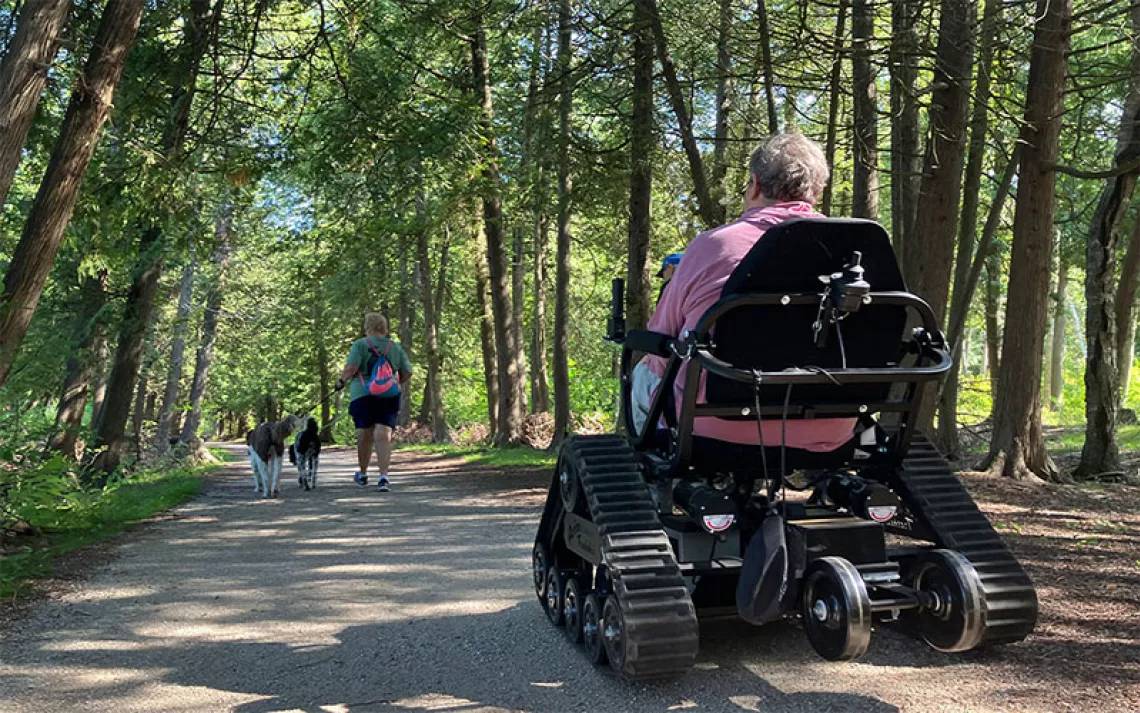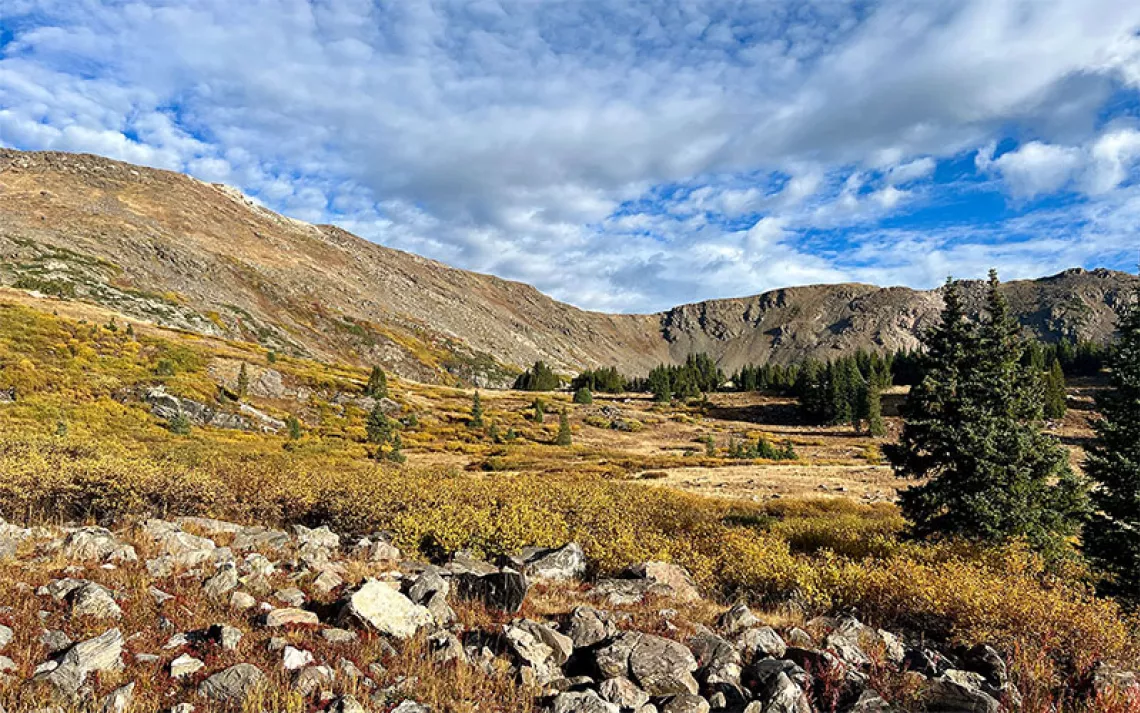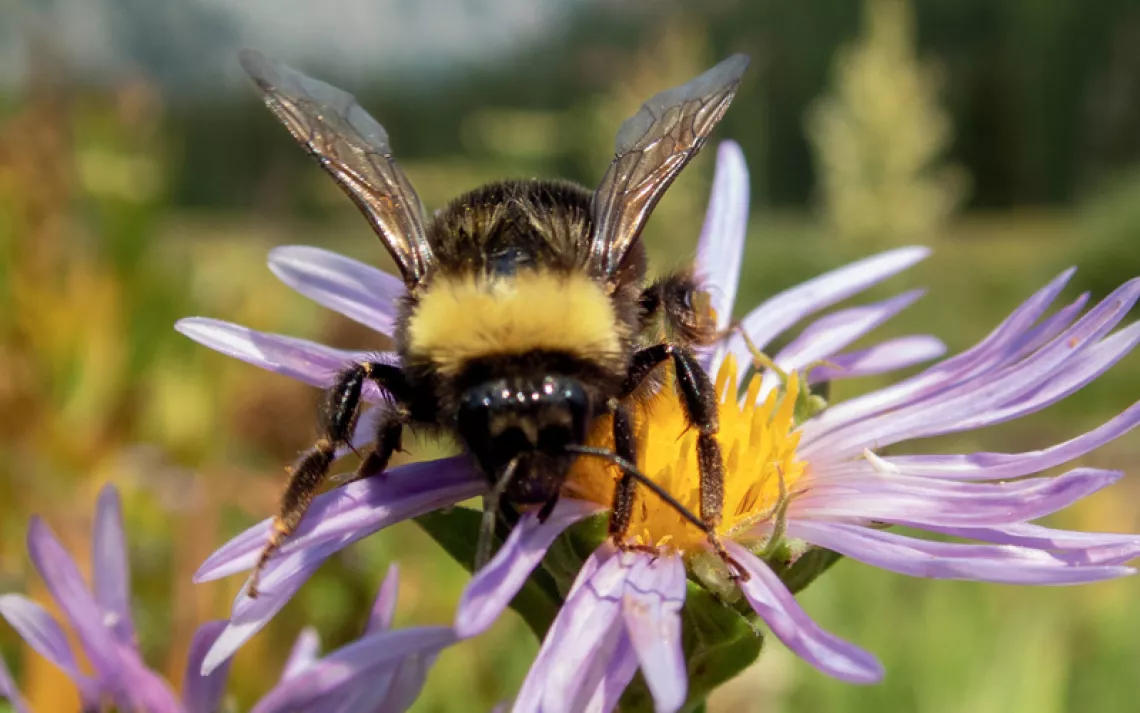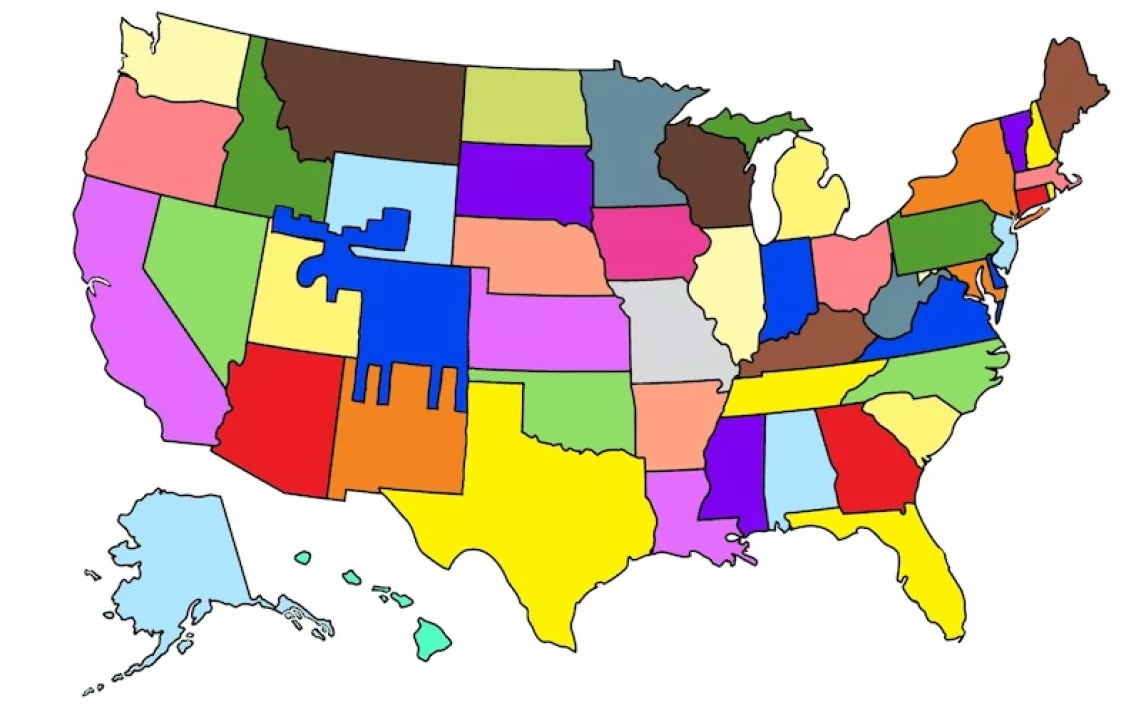At Home in a Hole in the Rock
A visitor finds refuge—and tales of deprivation—in the Grand Canyon's hidden alcoves

Everyday implements found in Grand Canyon alcoves speak of cowboy life on the range.
IN THE WESTERN Grand Canyon, when the mercury hits 100 degrees, shade becomes a destination.
Halfway down the layer cake of the ages, I walk on the pumpkin-colored Supai formation, feasting my eyes on the scenery. As summer radiation parboils my neck and pack straps dig into my shoulders, I scan the sandstone benches for refuge. Below, on a natural patio next to an outcrop, an old horseshoe snags my attention. I drop the pack to scout and find an opening, stone gaping like a whale's jaws.
This alcove housed people once. Its centerpiece is rodent-ravaged bedding, folded neatly and weighted with a rock. It looks as if the most recent cave dweller stepped out to attend to his horse and never came back. There is firewood, a Dutch oven, a torn bag spilling flour, one can of lard and another of Calumet (the baking powder with the hatchet-nosed chief)—it could have been biscuit or pancake day. There's a tin of Prince Albert tobacco, sporting His Highness, frocked and ramrod-straight. There is coffee of course, and a coffeepot, a glass jar of pitch or molasses, a box of matches that look like they would still light, a double-bladed ax, and blackened silverware. Against the wall, two wooden panniers for hauling all this stuff sit beneath a rough-scratched date: 1942.
I picture the lone buckaroo dodging summer's inferno while another, manmade one raged in the South Pacific. Clearly, he had meant to return.
Brick-red marks smudge the back wall, which flakes with age. On closer inspection I notice centipede-like designs that hunter-gatherers painted eons ago. The same need pulled us all here—nomads, sun-blasted, sore, looking for rest, snug in Earth's pocket.
I've escaped to this back of beyond from yammering neighborhood huskies, from the din of four-wheelers and earthmovers, from a mining town's prejudice and barbed gossip. My hometown in Alaska is also considered remote. Less than 175 miles from Siberia, Nome is accessible only by airplane, boat, dog team, or snowmachine. When I left there, the tundra had gone from crimson to brown, and the tailings piles seemed even bleaker than usual. My two-week retreat into the Grand Canyon thus also marks a last hurrah in the sun before I crawl into winter's cave.
The ground outside—the same slickrock that roofs the alcove—is smooth terra-cotta, intermittently pitted and cracked. The region is infamous for its lack of water, except during the monsoons, when potholes form a lifeline of fleeting reservoirs. Progress through this terrain is always painful and seldom straightforward. Limestone chunks from the layers above the Supai abrade hiking boots and shins. Catclaw, bear grass, brush, and agaves lacerate skin. June can roast marrow, January freeze a brain.
Permian winds laid this pavement, grain by crystalline grain. The fossilized dunes cap a terrace 200 yards to a mile in width, known as the Esplanade. Two thousand feet above the Colorado River and roughly the same distance below the canyon's North Rim, it winds drunkenly around nooks, springs, and peninsulas from Crazy Jug Canyon to the Toroweap viewpoint and beyond. Every once in a while, when the air does not stir, the whispering of rapids reaches an overlook.
Water that undermines sedimentary rock carves out hollows that, in size and acoustics, can range from cubbyhole to concert hall. At Mesa Verde in Colorado and near Arizona's Navajo Mountain, vast alcoves harbored entire settlements: tiered citadels, apartment hives, towers, and plazas that buzzed when Europe was building cathedrals. The Grand Canyon's alcoves tend to be smaller and less widely known, but the spark of discovery keeps me coming back here. In theory, on all public lands, federal laws protect cultural relics more than 50 years old, be they cowboy paraphernalia or Indian rock art. Pothunters and vandals, however, do roam the land, and I'm always surprised to see such treasures in place, undisturbed.
With soot on the ceilings, dust tracked by generations of mice, and rusty-tin middens nearby, the Esplanade's abodes differ drastically from the romanticized chuck wagon camps of John Ford Westerns. Spend a few hours in a cowboy alcove and you'll taste not campfire wistfulness but hardship and hardheadedness, the hermit's self-imposed deprivation. Dents in a washbasin. An ax handle mended with wire. A hoof with a horseshoe attached.
A seep above the Supai, which a stockman with a dynamite stick had supposedly tried to enhance and which I'd hoped to tap, turns out to be barren. Luckily, as shadows from the rim flood the patio—bringing chills in their wake—I locate a gallon of rank effluent a stone's throw from the alcove, where runoff has guttered the bedrock. This must be part of the shelter's appeal: the only water for miles around.
I'm about a week into my trip, and I haven't encountered a soul. I enter a fissure that starts in the Esplanade and entrenches toward Kanab Creek. The largest tributary on the canyon's north side and one of few major water sources in the Arizona Strip, Kanab Creek runs only sporadically. It feeds redbuds and single-leaf ash and beads hanging gardens of flowers and maidenhair fern—a relief from the surrounding blackbrush and cactus fields. I plan to follow the creek for a while before exiting its canyon and climbing back to the Esplanade. I long for the creek's soothing touch, which will cool my scrapes and rinse the dust off my body. Only last spring I camped under the cottonwoods on its banks, lulled by the water's soliloquy.
Where the tributary widens into Kanab Canyon, I do a double take and again check my map. But I haven't made a mistake—the creek has been muted, its bed choked with dust. Mud like unfired clay splinters underfoot. Cobblestones crunch where the current once slid across gravel bars. I'm in shock. Is this the result of drought or more siphoning for irrigation by ranches in the creek's upper parts?
There is a third possible culprit, I realize as I trudge between thickets: tamarisk, the scabrous pest that bleeds the Southwest. The lacy-leafed growth crowds out native willows and cottonwoods, concentrates salt in the soil, and sinks taproots that lower the groundwater table.
After an hour or so, I arrive at a pool ringed with mud that blocks my way up the creek bed. An agave tip long ago punctured and drained my water jug, and the bladder in my backpack has only a pint left. But the residue of this stream in retreat is too thick to be filtered into drinking water. Disappointed and dehydrated, I bushwhack around the gunk hole and push on.
Toward noon, eager to leave this husk of a waterway, I nose up a side canyon that could get me to the Esplanade. One of its forks soon ends in a sandstone balcony. A second fork beckons like a mirage--rising, sinuous, promising. Sculpted walls screen out the afternoon glare, and the floor holds clear lenses of water. I fall to my knees and kiss one greedily, not bothering with filter or cup.
I round what I hope will be the last bend before the drainage tops out but am stopped by a rockfall. Cabin-size boulders lie on edge, stacked into a booby-trapped jungle gym, a disaster riddled with crawl spaces. A possible route through this mess starts with stemming between two angled monoliths. I place one foot and both hands and push up and into the crack in one quick move.
The sickening crunch of pulled gristle registers an instant before the pain in my right shoulder.
I slide back to the ground. Something is seriously wrong. The limb feels useless, not part of me. I am suddenly light-headed, which masks the black ache. This is the fourth time I have dislocated this shoulder, though never before so far from help. By now I know the drill. Let your arm dangle, muscles relaxed. Rotate your upper body, carefully, back and forth. Avoid any grinding of bone on bone. When the humerus head and the torso's socket align just so, the limb will slip into its joint, smooth as a chambered bullet.
And it does, after several tries.
This is no country for men past their prime, or for the lame. This is why the Park Service had me sign a liability waiver, warning against an "unusually difficult and potentially dangerous" hike.
With my arm pressed to my rib cage--hand tucked into my waistband for support--I scramble back down the canyon. At the first of the water pockets, I make camp on the slickrock. Fixing dinner more or less one-handed, I feel like a bird with a clipped wing. Where the geology offers shelter, as it does on the esplanade, I travel without a tent. Tonight, with cold stars throbbing overhead, I wish for a hole to curl up in and lick my wounds.
Days later, back on the Esplanade, stiff-shouldered but still making miles, I come upon Bean Cave, whose former lodger I've read about. A signature at eye level in the shallow niche claims it as one of Walapai Johnnie's far-flung dens. In 1928, young John D. "Walapai Johnnie" Nelson joined the search for river runners Glen and Bessie Hyde, who'd vanished on their honeymoon voyage through the Grand Canyon. Johnnie had fought in the Philippines and later worked as a pack-trip guide around these parts. Often blind drunk by noon, he was nevertheless popular with the outfitters who fired and rehired him, according to one boss, "about 50 times every season." A 1954 Kodak ad shows him herding dudes past Bryce Canyon hoodoos: Smiling, he leans on his paint pony, relaxed in batwing chaps, hat tipped back rakishly. You can tell he was charming, a spinner of yarns, fully at ease, someone you'd want as a guide--a spitting image of my younger, wrangling-days self, I'd like to think, except for his raven hair. He must have had grit. He built the trail that drops precipitously through the Supai to a leaf-shaded spring named after him.
The vestiges of Walapai Johnnie's tenure in the Grand Canyon transport me back to my own days of working on horseback. My alcove then was a 12-foot, ovenlike trailer near Tucson that contained a two-burner gas stove, legions of flies, and pints of dust sifting in through the cracks. I was living my Western dream, guiding for a trail-riding outfit. Broke, exhausted, and reeking of stables, I cut short my cowboy "career" when a nag kicked my chest and I had to pay for the X-rays myself.
Before I set out on the last leg of my journey--Johnnie's former commute, a century-old switchback that could kill a mule--I meet three backpackers fresh from the North Rim. Perched on a boulder, legs primly crossed, I chat for a while with their young female leader. As they get up to leave, I stand and pivot, facing the group to hide my half-bare behind. After weeks of abuse from sandpaper rocks, my lone pair of shorts hangs in tatters. I'm wearing a T-shirt, boots, a smile--and not much else. I must look like the hobo king of the alcove clan. I probably smell like him too.
 The Magazine of The Sierra Club
The Magazine of The Sierra Club







